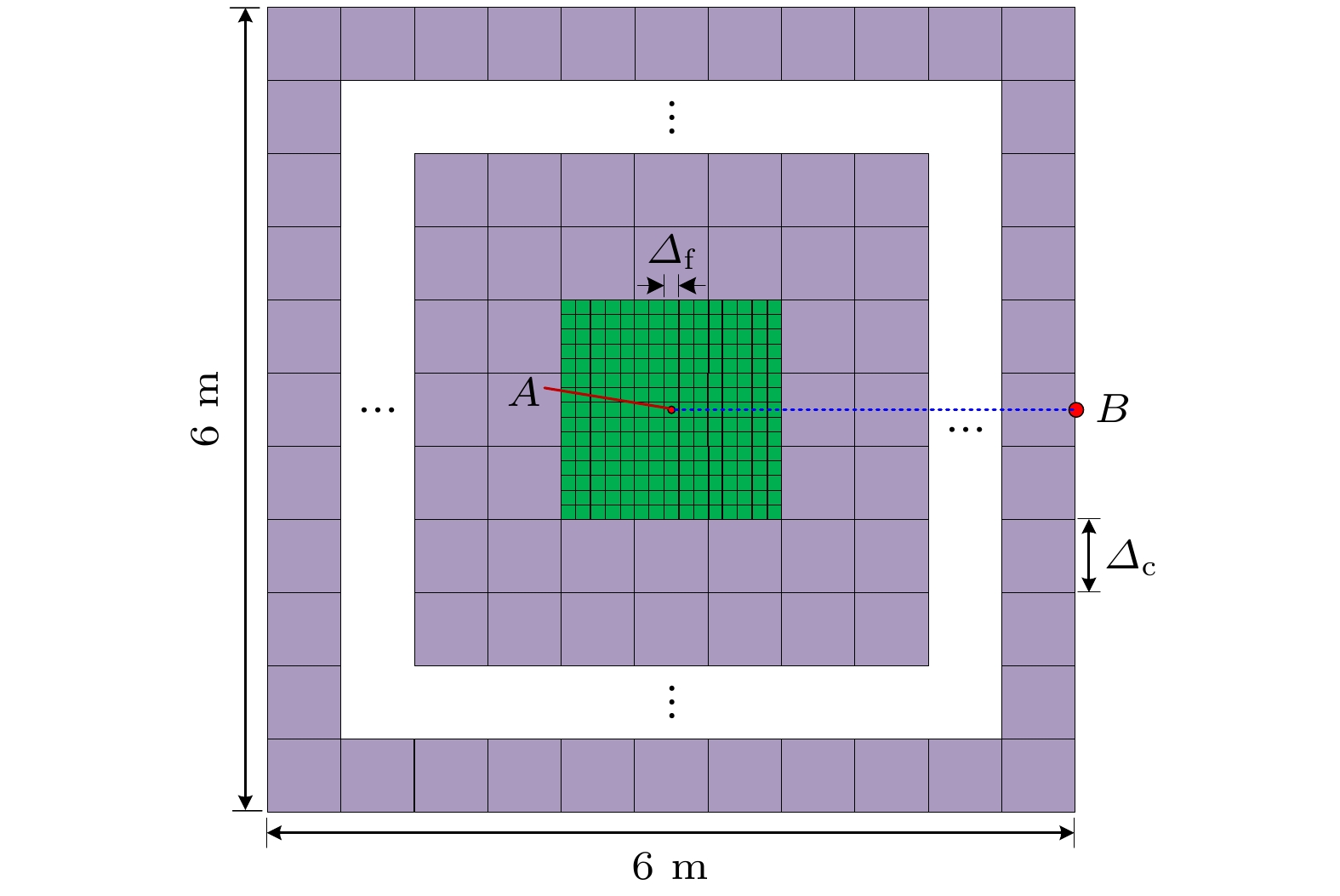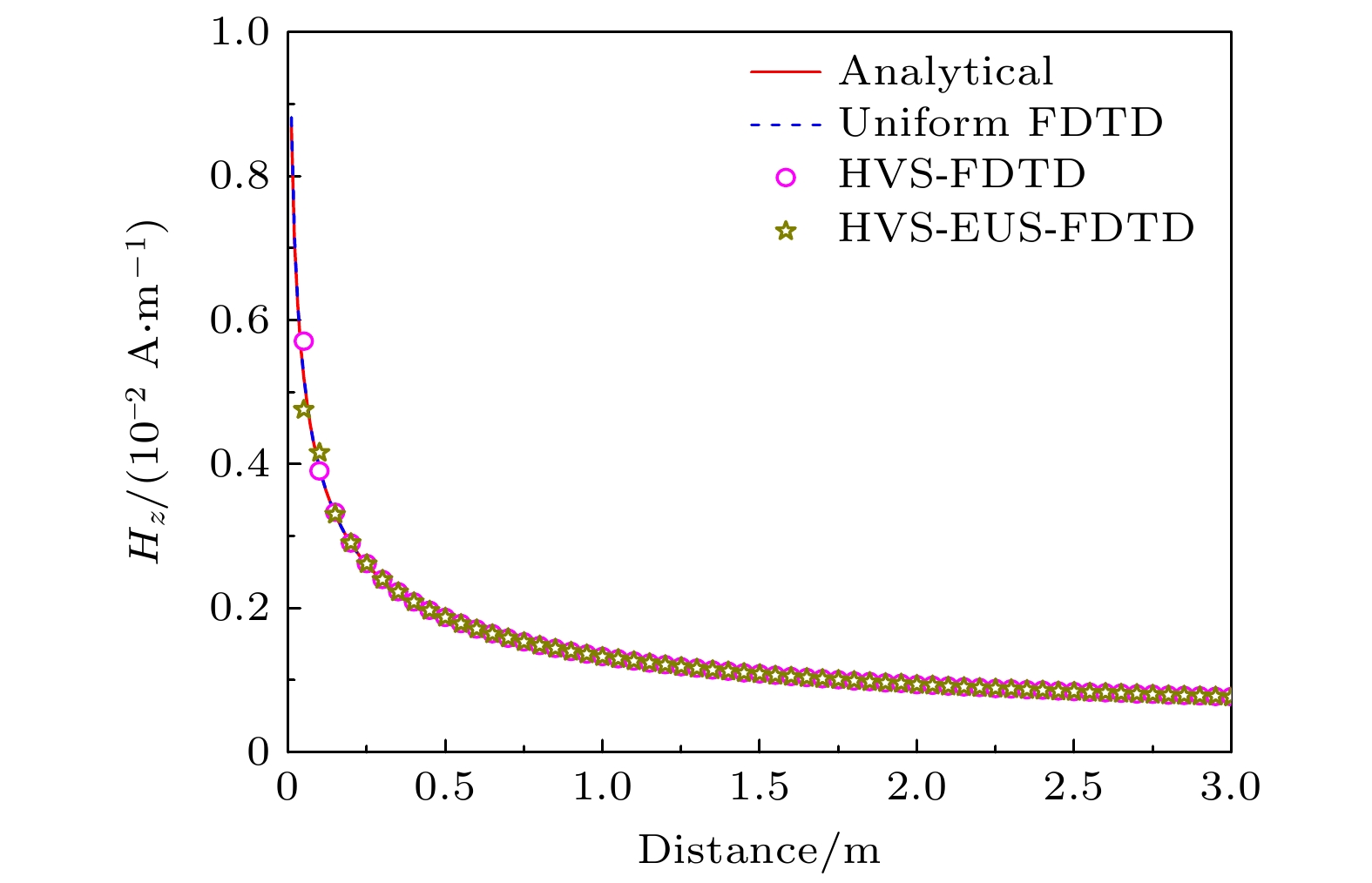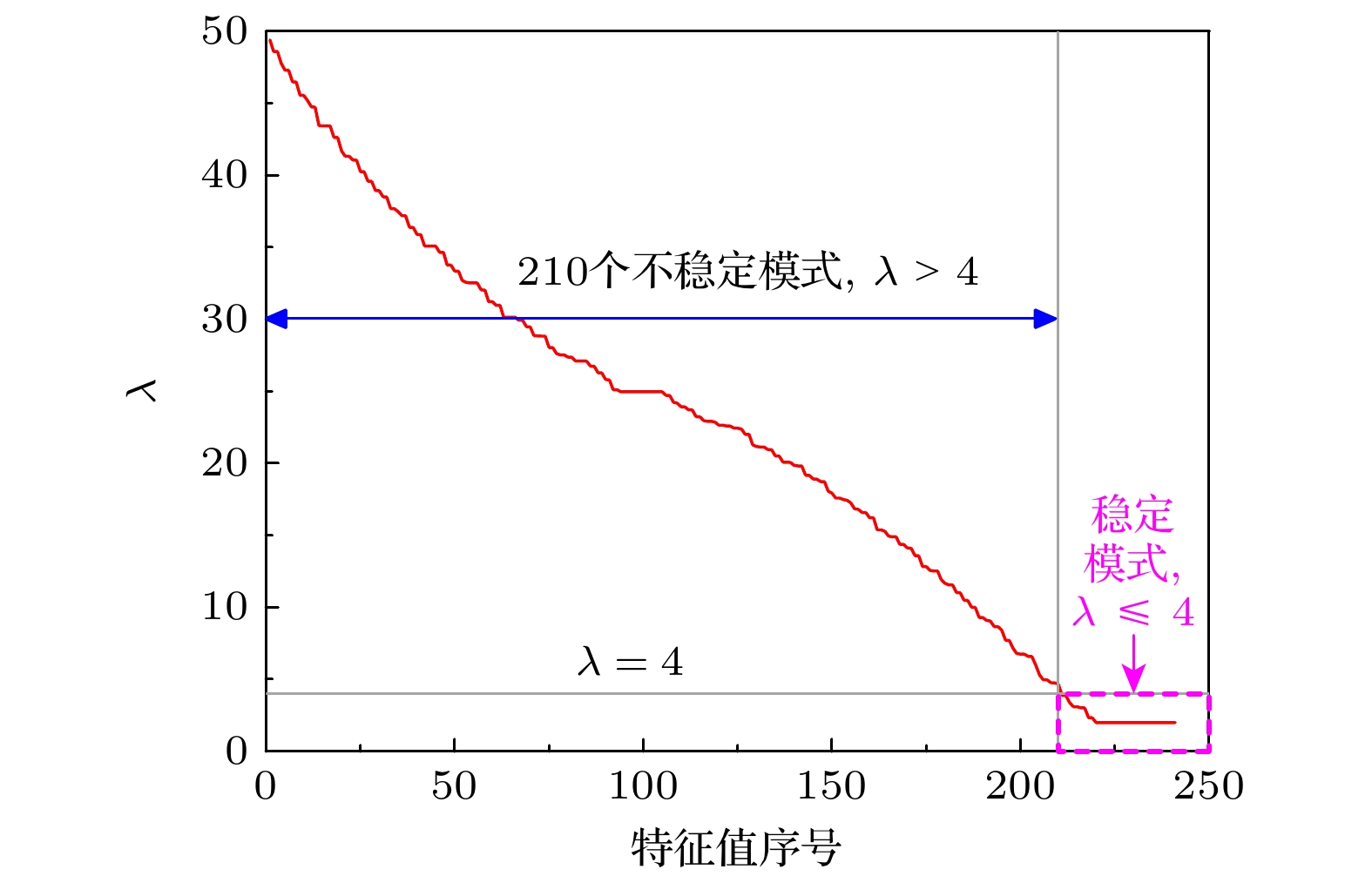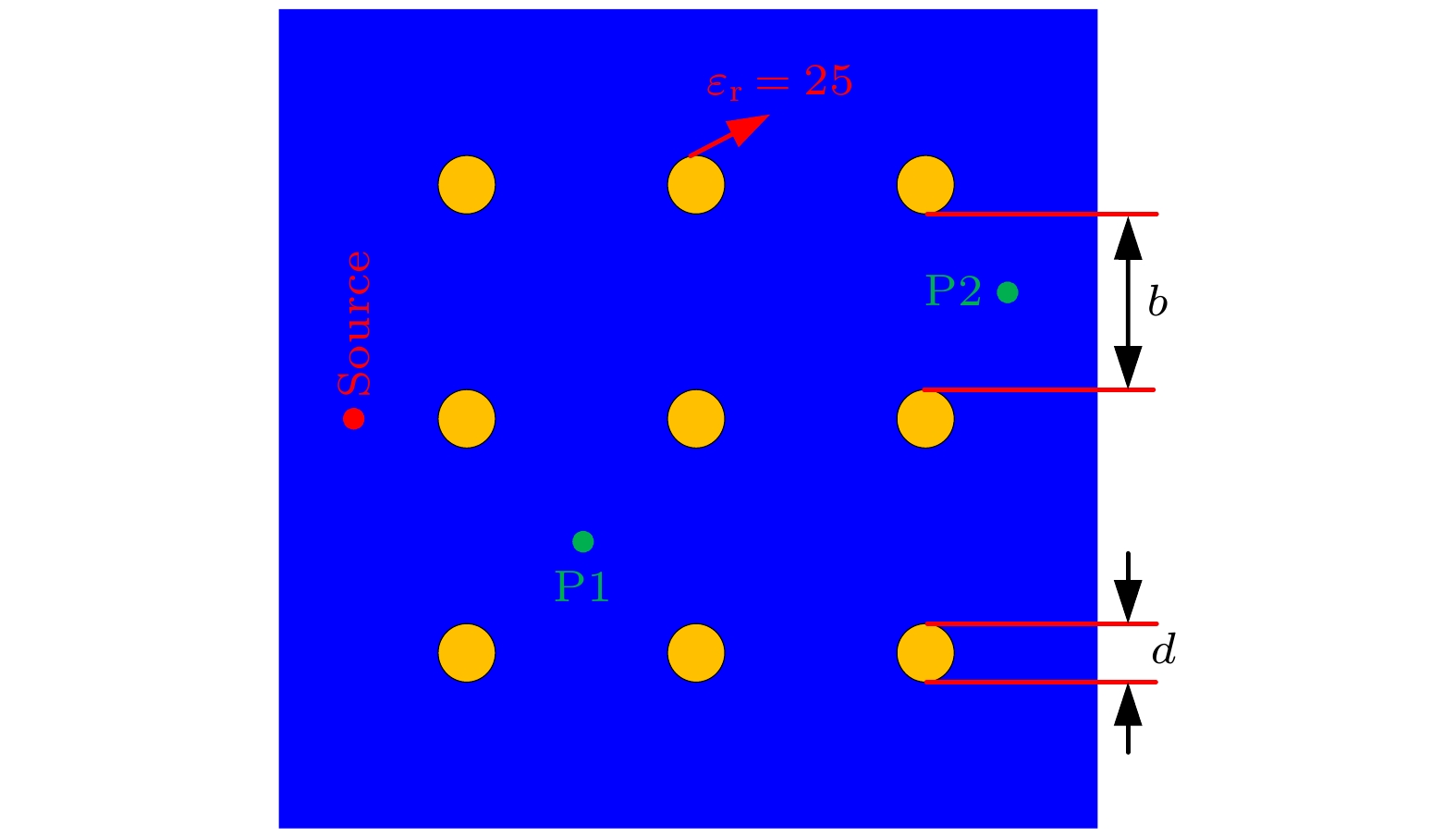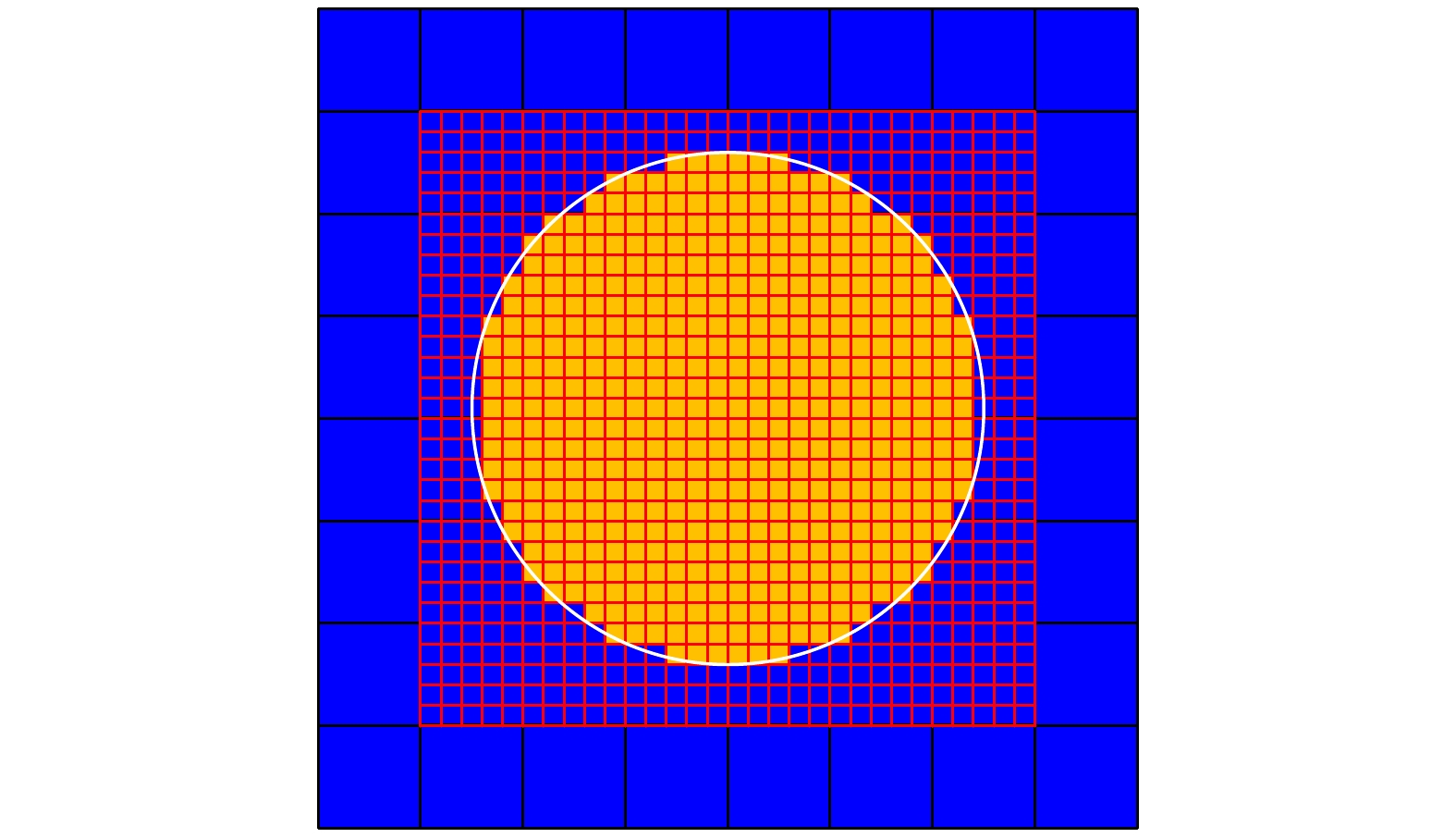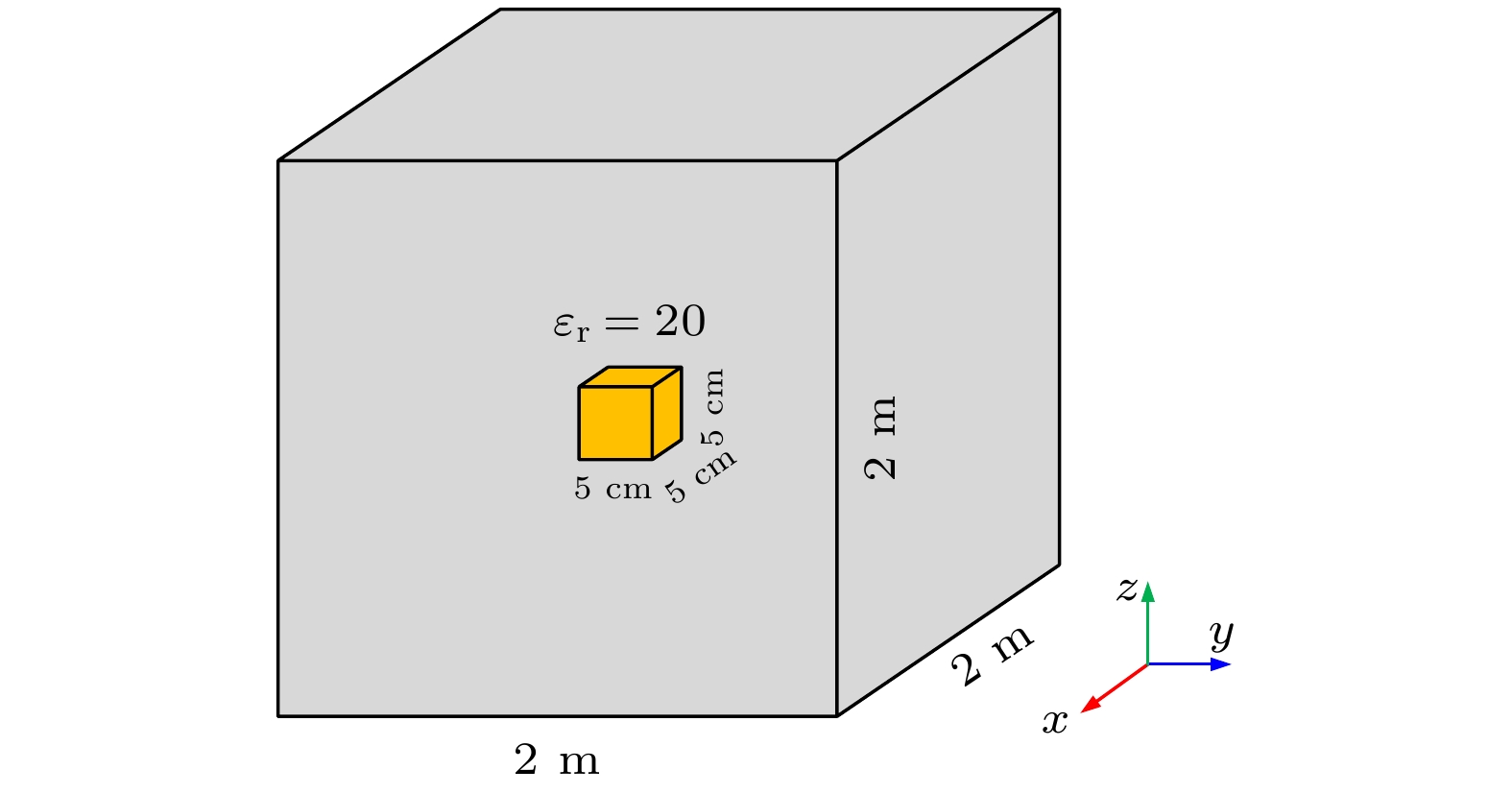-
Due to the limitation of the stability condition, the finite-difference time-domain (FDTD) method cannot efficiently deal with electromagnetic problems containing fine structures. The explicit and unconditionally stable (EUS) FDTD method can eliminate the constraint of the stability condition and improve the simulation efficiency of fine structures by filtering out the unstable modes for the system matrix. However, the EUS-FDTD method needs to solve the eigenvalues of the numerical system matrix, and the symmetry of the numerical system matrix needs to be ensured when the subgridding scheme is used to discretize targets containing fine structures. The existing EUS-FDTD subgridding method encounters some problems such as complex implementation and insufficient accuracy. In order to solve the above problems, in this work, the hanging variables subgridding (HVS) algorithm is applied to the EUS-FDTD algorithm. Starting from the symmetry of the system matrix, the stability of the hanging variables subgridding algorithm is proven, and a high-precision, stable, and easy-to-implement HVS-EUS-FDTD scheme is proposed. Numerical examples of the radiation of linear magnetic currents in free space, electromagnetic scattering of multiple dielectric objects, and a three-dimensional cavity containing a medium demonstrate the stability, high accuracy and efficiency of the proposed method. Numerical experiments show that the computational efficiency of the HVS-EUS-FDTD algorithm can be improved hundreds of times compared with that of the uniform fine grid FDTD algorithm, and the highest computational efficiency can be improved up to ratio (the size ratio of coarse grid to fine grid) times compared with that of the HVS-FDTD algorithm.
-
Keywords:
- finite-difference time-domain /
- explicit and unconditionally stable /
- hanging variables /
- fine structures
[1] Tan E 2020 Prog. Electromagn. Res. 168 39
 Google Scholar
Google Scholar
[2] He X B, Wei B, Fan K H, Li Y W, Wei X L 2019 Chin. Phys. B 28 074102
 Google Scholar
Google Scholar
[3] Gedney S 2011 Introduction to the Finite-difference Time-domain (FDTD) Method for Electromagnetics (Berlin: Springer Nature) pp1–11
[4] Namiki T 1999 IEEE Trans Microwave Theory Tech. 47 2003
 Google Scholar
Google Scholar
[5] Zheng F H, Chen Z Z 2001 IEEE Trans Microwave Theory Tech. 49 1006
 Google Scholar
Google Scholar
[6] Chen J, Hao G C, Liu Q H 2017 IEEE Trans. Electromagn. Compat. 59 1218
 Google Scholar
Google Scholar
[7] Shibayama J, Muraki M, Yamauchi J, Nakano H 2005 Electron. Lett. 41 1
 Google Scholar
Google Scholar
[8] Ahmed I, Chua E K, Li E P 2010 IEEE Trans. Antennas Propag. 58 3983
 Google Scholar
Google Scholar
[9] Ahmed I, Khoo E H, Li E P 2013 IEEE Microwave Wireless Compon. Lett. 23 306
 Google Scholar
Google Scholar
[10] Sun C, Trueman C W 2003 Electron. Lett. 39 595
 Google Scholar
Google Scholar
[11] Jiang H L, Cui T J 2019 IEEE Antennas Wireless Propag. Lett. 18 698
 Google Scholar
Google Scholar
[12] Chen J, Li J X, Liu Q H 2017 IEEE Trans. Microwave Theory Tech. 65 3689
 Google Scholar
Google Scholar
[13] Mai H X, Chen J, Yu X M, Zhang A X 2020 Int. J. RF Microwave Comput. Aided Eng. 30 e22166
 Google Scholar
Google Scholar
[14] Gaffar M, Jiao D 2015 IEEE Trans Microwave Theory Tech. 63 4215
 Google Scholar
Google Scholar
[15] Yan J, Jiao D 2017 IEEE Trans Microwave Theory Tech. 65 5084
 Google Scholar
Google Scholar
[16] Yan J, Jiao D 2018 IEEE Trans. Antennas Propag. 66 4137
 Google Scholar
Google Scholar
[17] Yan J, Jiao D 2017 IEEE Trans. Microwave Theory Tech. 65 2698
 Google Scholar
Google Scholar
[18] Zeng K Y, Jiao D 2020 IEEE Trans. Antennas Propag. 68 3047
 Google Scholar
Google Scholar
[19] Bekmambetova F, Zhang X Y, Triverio P 2017 IEEE Trans. Antennas Propag. 65 751
 Google Scholar
Google Scholar
[20] Zhang X Y, Bekmambetova F, Triverio P 2018 IEEE Trans. Antennas Propag. 66 827
 Google Scholar
Google Scholar
[21] Lee W 2018 IEEE J. Multiscale Multiphys. Comput. Tech. 3 16
 Google Scholar
Google Scholar
-
表 1 三种数值算法的计算时间比较
Table 1. Comparison of calculation times of three numerical algorithms.
方法 uniform FDTD HVS-FDTD HVS-EUS-FDTD 时间/s 2295.5 17.45 0.05+5.3 时间步长/(10–11 s) 1.67 1.67 8.33 迭代步数 50000 50000 10000 内存/MB 136.1 3.2 4.3 表 2 三种数值算法的计算参数比较
Table 2. Comparison of calculation parameters of three numerical algorithms.
Uniform FDTD HVS-FDTD HVS-EUS-FDTD 时间/s 91.36 2.19 0.29+0.78 时间步长/(10–12 s) 3.33 3.33 16.7 迭代步数 5000 5000 1000 内存/MB 86 7.2 11.6 表 3 三种数值算法的计算参数比较
Table 3. Comparison of calculation parameters of three numerical algorithms.
Uniform FDTD HVS-FDTD HVS-EUS-FDTD 时间/s 28816.8 314.2 0.01+64.7 时间步长/(10–11 s) 1.67 1.67 8.33 迭代步数 5000 5000 1000 内存/MB 9773 321 342 -
[1] Tan E 2020 Prog. Electromagn. Res. 168 39
 Google Scholar
Google Scholar
[2] He X B, Wei B, Fan K H, Li Y W, Wei X L 2019 Chin. Phys. B 28 074102
 Google Scholar
Google Scholar
[3] Gedney S 2011 Introduction to the Finite-difference Time-domain (FDTD) Method for Electromagnetics (Berlin: Springer Nature) pp1–11
[4] Namiki T 1999 IEEE Trans Microwave Theory Tech. 47 2003
 Google Scholar
Google Scholar
[5] Zheng F H, Chen Z Z 2001 IEEE Trans Microwave Theory Tech. 49 1006
 Google Scholar
Google Scholar
[6] Chen J, Hao G C, Liu Q H 2017 IEEE Trans. Electromagn. Compat. 59 1218
 Google Scholar
Google Scholar
[7] Shibayama J, Muraki M, Yamauchi J, Nakano H 2005 Electron. Lett. 41 1
 Google Scholar
Google Scholar
[8] Ahmed I, Chua E K, Li E P 2010 IEEE Trans. Antennas Propag. 58 3983
 Google Scholar
Google Scholar
[9] Ahmed I, Khoo E H, Li E P 2013 IEEE Microwave Wireless Compon. Lett. 23 306
 Google Scholar
Google Scholar
[10] Sun C, Trueman C W 2003 Electron. Lett. 39 595
 Google Scholar
Google Scholar
[11] Jiang H L, Cui T J 2019 IEEE Antennas Wireless Propag. Lett. 18 698
 Google Scholar
Google Scholar
[12] Chen J, Li J X, Liu Q H 2017 IEEE Trans. Microwave Theory Tech. 65 3689
 Google Scholar
Google Scholar
[13] Mai H X, Chen J, Yu X M, Zhang A X 2020 Int. J. RF Microwave Comput. Aided Eng. 30 e22166
 Google Scholar
Google Scholar
[14] Gaffar M, Jiao D 2015 IEEE Trans Microwave Theory Tech. 63 4215
 Google Scholar
Google Scholar
[15] Yan J, Jiao D 2017 IEEE Trans Microwave Theory Tech. 65 5084
 Google Scholar
Google Scholar
[16] Yan J, Jiao D 2018 IEEE Trans. Antennas Propag. 66 4137
 Google Scholar
Google Scholar
[17] Yan J, Jiao D 2017 IEEE Trans. Microwave Theory Tech. 65 2698
 Google Scholar
Google Scholar
[18] Zeng K Y, Jiao D 2020 IEEE Trans. Antennas Propag. 68 3047
 Google Scholar
Google Scholar
[19] Bekmambetova F, Zhang X Y, Triverio P 2017 IEEE Trans. Antennas Propag. 65 751
 Google Scholar
Google Scholar
[20] Zhang X Y, Bekmambetova F, Triverio P 2018 IEEE Trans. Antennas Propag. 66 827
 Google Scholar
Google Scholar
[21] Lee W 2018 IEEE J. Multiscale Multiphys. Comput. Tech. 3 16
 Google Scholar
Google Scholar
Catalog
Metrics
- Abstract views: 3810
- PDF Downloads: 49
- Cited By: 0















 DownLoad:
DownLoad:

